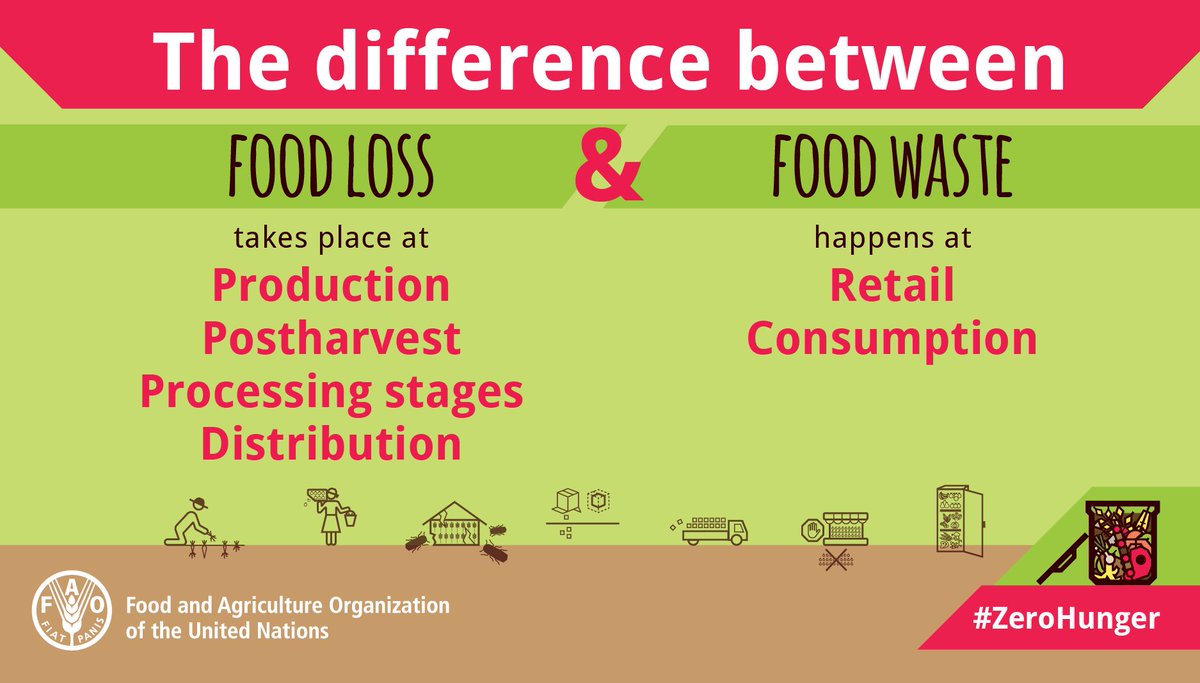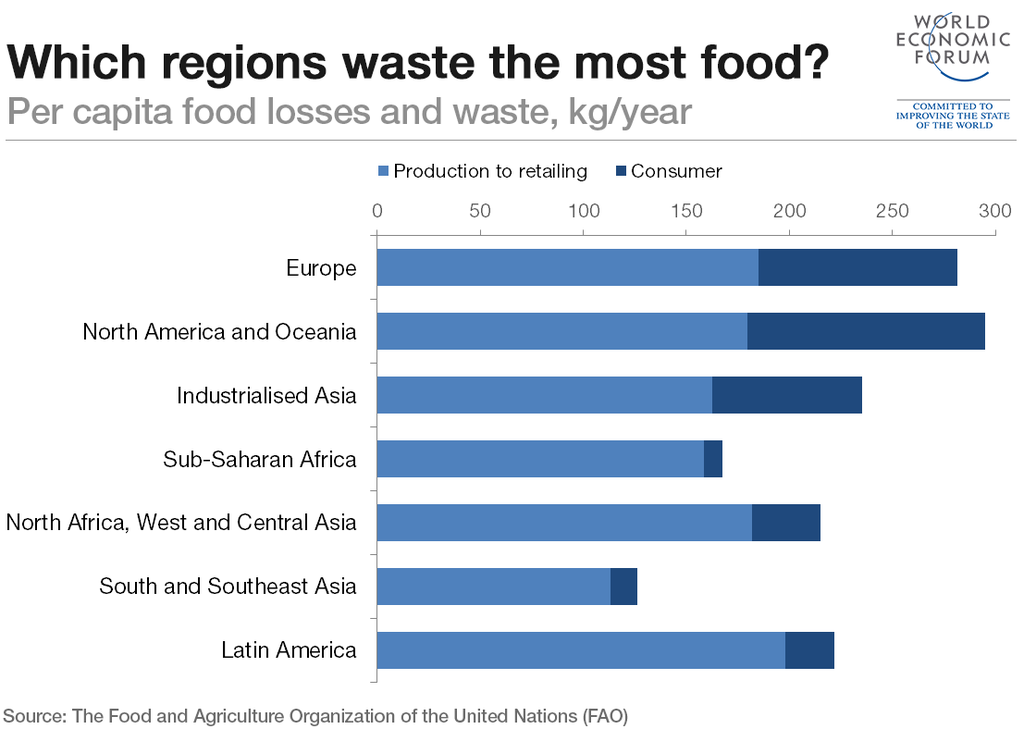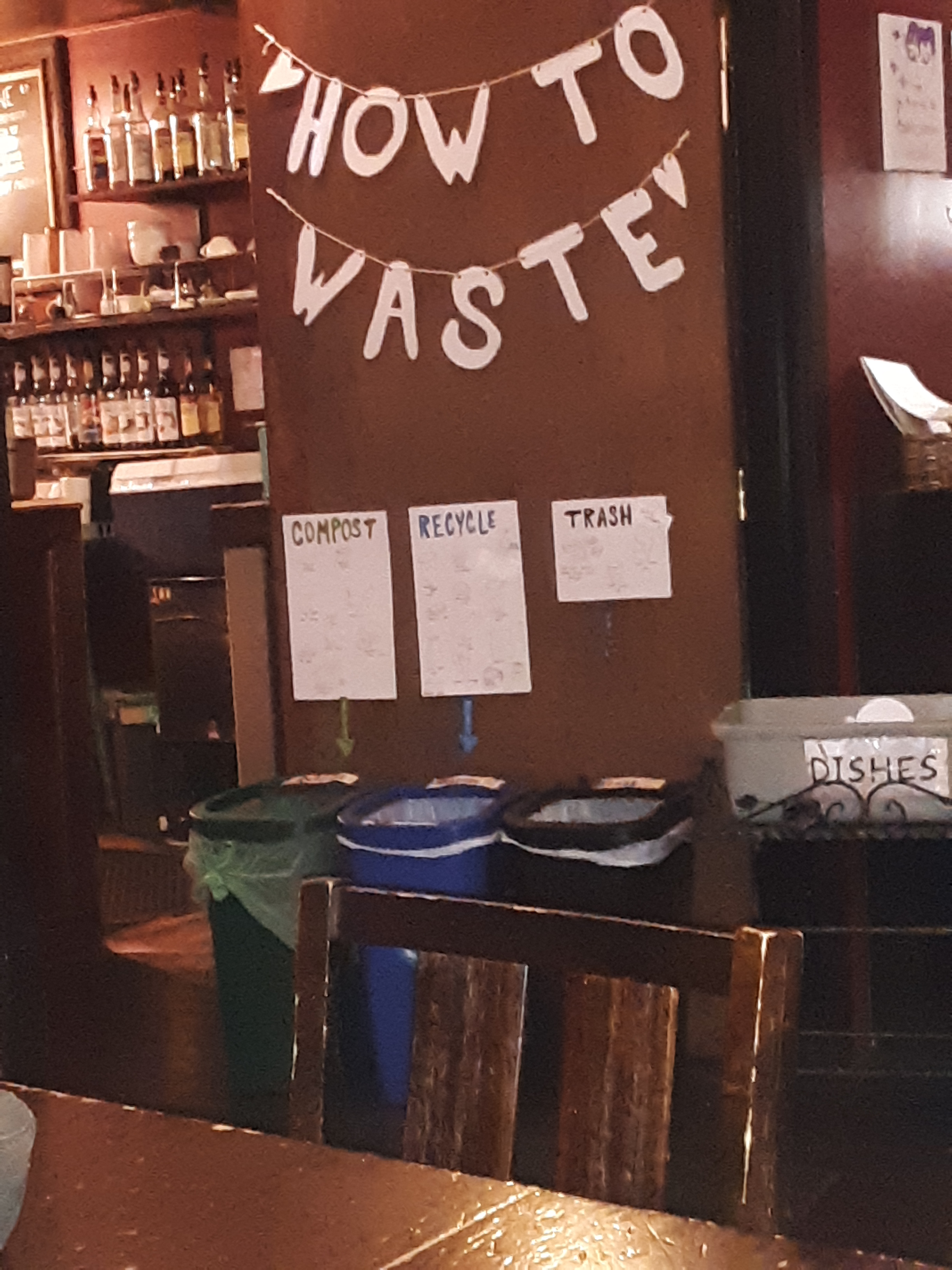
What is food wastage?
Food waste is a very familiar subject since I volunteered at the food bank; I’ve seen a lot of restaurants & customers waste tremendous amounts. The number of donations each day was beyond belief which is problematic. If everyone could donate a little bit to the food bank, it would contribute to the food shortage immensely. Keep in mind here, food wastage is divided into food loss and food waste. Food loss is at the start of the supply chain with production and harvest, then processing. On the other hand, food waste is found during the distribution, retail and consumer consumption. Food wastage at any level leads to environmental issues, natural resource depletion which undermines food security. ScienceDirect defines food waste as follows, “In this paper, the definition of FW reported in the FUSIONS definitional framework is adopted, which states that food waste is any food, and inedible parts of food, removed from the food supply chain to be recovered or disposed.”
What is the % of food wastage in the world?

ScienceDirect mentions, “About one third ( around 1.3 billion tons) of the food produced globally is wasted along the food chain, representing a burden for the environment and an inefficiency of the food system.” fao.org also mentions, “To date, no study has analyzed the impacts of global food wastage from an environmental perspective. It is now recognized that food production, processing, marketing, consumption, and disposal have important environmental externalities because of energy and natural resources usage and associated greenhouse gas (GHG) emissions. Broadly speaking, the environmental impacts of food mostly occur during the production phase. However, beyond this general trend, large discrepancies in food consumption and waste-generation patterns exist around the world. In a context of increasing commercial flows, there are significant differences in the intensity of wastage impacts among agricultural commodities, depending on their region of origin and the environmental issue considered. Therefore, it is necessary to assess the environmental impact of this food wastage at a regional level and by commodity type in order to capture specificities and finally draw the global picture.” As you can see from the graph above North America and Europe has the highest % of food wastage compared to the rest of the world. This is due to several factors such as culture, consumer behavior, socio-economic class, and lack of knowledge in food safety and shelf life of food items.
Food wastage solutions vs. Food shortage in 2050
There are different organizations providing solutions to the food wastage problem. For example, there is data collection information available on food wastage by the UN Food and Agriculture Organisation’s (FAO). Food wastage reduction would help to cover the food shortage that the world will face in 2050. As FAO mentions, “Food wastage reduction would not only avoid pressure on scarce natural resources but also decrease the need to raise food production by 60 percent in order to meet the 2050 population demand.” FAO provides a detailed summary report on the impact of food wastage on natural resources, and the impact on the carbon footprint. Moreover, food waste solutions can be implemented by educating the public about the shelf life of food products such as expiration dates, information on how to shop efficiently, other food loss, and waste packaging strategies during production. Also, consumer behavior, age, and economic class can be a factor in food waste. For example, a person who is a full-time professional vs. a labor worker, older vs. younger, shopping vs. eating out, and many other factors such as fridge size and storage. There are many things to take into account when thinking of food wastage, it’s a complex issue. We have to think about the food wastage consumer attitudes, daily routine, and practices of food wastage, shopping psychology, and policies implemented by businesses to help reduce food wastage. Nowadays, consumers and businesses are more conscious about food wastage which is definitely helping reduce food wastage and shortage faced in the future. The topic is very broad, and I encourage you to check out the websites under references to learn more about the subject.
I’ll leave you with this last thought about food wastage: compost; recycle; trash 🙂 how would you think a consumer would approach this? and will it help reduce food wastage?:

References
- Website: https://www.sciencedirect.com/science/article/pii/S2211912417301530 – easy signup and free access to the article.
2. Website: https://www.weforum.org/agenda/2015/08/which-countries-waste-the-most-food/
3. Website: http://www.fao.org/3/i3347e/i3347e.pdf
4. Website: https://www.fooddrinkeurope.eu/our-actions/foodwaste-toolkit/what-is-food-wastage/
5. Website: https://www.foodbank.org.au/about-us/how-we-work/food-waste/
6. Website: https://www.sciencedirect.com/science/article/pii/S0959652618303366?dgcid=raven_sd_recommender_email
